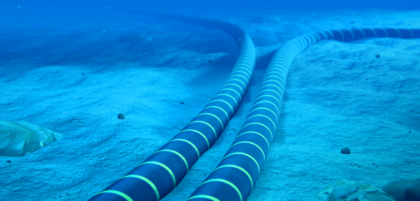 The Uk braces for a new electricity order in which renewable energy generated from Morocco’s Sahara is well-placed as a competitive, clean and affordable source to supply the UK market, wrote the Telegraph.
The Uk braces for a new electricity order in which renewable energy generated from Morocco’s Sahara is well-placed as a competitive, clean and affordable source to supply the UK market, wrote the Telegraph.
Xlinks consortium is preparing to launch within five years the world’s longest undersea cable to channel energy from Guelmim region in the Moroccan Sahara to Devon in the UK, a project that will power 7 million British households.
«A second cable will land two years later in 2029. Together they will provide 3.6 gigawatts (GW) of constant baseload power, equivalent to two Hinkley-sized nuclear reactors. The difference is that we will be able to afford it. That, at least, is the plan, » wrote Ambrose Evans Pritchard on the Telegraph.
The Xlinks project will combine both wind and solar in an area which receives at least 10 hours of sun in winter and will span over an area of 580 square miles.
The project’s yield is « three times higher than in the UK, » it said, adding that the project will make the UK a leader in subsea cables manufacturing and technology.
«Modern HVDC technology at 515 kilovolts has shaved the total loss to 15pc, including the conversion of electricity at both ends,» the article says.
Citing Simon Morrish, the project’s chief executive, the paper said that the project will trigger «explosion of long-distance interconnectors criss-crossing the seas.»
It adds that Morocco is best placed to host such an investment as a stable country insulated from terrorist attacks.
The UK’s XLCC is planning the setting up of a factory in Hunterston, Scotland, to manufacture the world’s largest subsea cable that will send clean energy from Morocco to the UK.
The connection will nearly double the world’s current production of HVDC cable manufacturing with XLCC promising to use British steel.
The undersea cable will comprise 90,000 tons of steel and will follow the shallow water route from Morocco to the UK, past Spain, Portugal, and France.
Once complete, the project will be capable of supplying 8% of Britain’s electricity needs.


